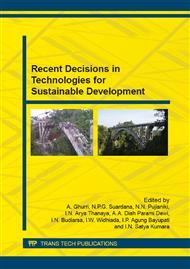p.325
p.331
p.337
p.343
p.349
p.355
p.361
p.371
p.377
Role of Risk Management in Effective Maintenance
Abstract:
Every manufacturer requires plant maintenance. Knowing that an effective maintenance system increases sales and decreases maintenance cost of the production facility, maintenance is deemed to be substantial contributions to improved plant profit changing from a necessary evil to a profit centre. Unfortunately, this sometime is a far cry from reality. This paper offers a concept of incorporating risk into maintenance and development of a Decision Support System (DSS) for decision makers in the maintenance department. It helps prioritise critical equipment and select its associated maintenance strategy for optimum results. The results of validating the devised AHP-based software package in a case study company in Indonesia are promising since the company successfully gains 3.65% in Net Line Efficiency and 3.13% in Gross Line Efficiency as well as enjoys an advantage over 4.56 points decrease in Operation Performance Loss.
Info:
Periodical:
Pages:
349-354
Citation:
Online since:
July 2015
Authors:
Keywords:
Price:
Сopyright:
© 2015 Trans Tech Publications Ltd. All Rights Reserved
Share:
Citation:


